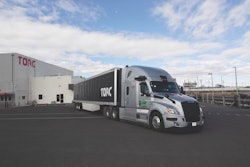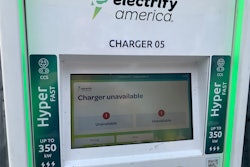Last mile delivery has emerged as a critical battleground for businesses striving to meet customer demands with speed, efficiency and precision. As consumers continue to embrace the convenience of online shopping, the pressure on delivery fleets to perform flawlessly has never been higher.
To stay ahead in this fiercely competitive landscape, fleet managers and logistics professionals must rely on data-driven insights to optimize their operations. Tracking the right metrics is the key to unlocking the full potential of last mile delivery fleets. In this article, we will explore the seven most crucial performance indicators that can make all the difference between a struggling fleet and a thriving one.
Before we dive into the most important last mile delivery fleet metrics, let's take a moment to understand what fleet metrics are and why they are crucial for optimizing delivery operations. Fleet metrics are quantitative measurements that offer insights into the performance and efficiency of a delivery fleet. By tracking and analyzing these metrics, fleet managers can assess various aspects of their operations, identify areas for improvement, and make data-driven decisions to enhance overall performance.
In the context of last mile delivery, where the final leg of the journey from a distribution center to the customer's doorstep is critical, tracking the right metrics becomes even more imperative. These metrics provide a clear picture of how well the fleet is operating, how efficiently it is handling deliveries, and whether it is meeting customer expectations.
Tracking fleet metrics is not just a good practice, it's a necessity for any delivery fleet looking to thrive in today's dynamic and demanding business landscape. Fleet metrics offer a comprehensive view of the entire delivery process. Analyzing data on delivery times, routes, and fuel efficiency allows fleet managers to identify bottlenecks, inefficiencies and areas for improvement. This enables them to make informed decisions to optimize operations, streamline routes, and ensure optimal resource utilization.
Running a delivery fleet incurs various expenses, from fuel and maintenance to labor and vehicle depreciation. By tracking fleet metrics, such as fuel efficiency and delivery cost per mile, managers can assess the financial health of the fleet and identify opportunities for cost savings. This not only improves profitability but also allows for investments in technology and infrastructure upgrades.
In the last mile of the delivery journey, customer satisfaction is paramount. Monitoring metrics like on-time performance, first attempt delivery rate, and customer satisfaction ratings helps fleet managers gauge how well they are meeting customer expectations. Consistently delivering on time and ensuring successful first attempts boosts customer loyalty and builds a positive brand reputation.
In the highly competitive e-commerce and logistics space, differentiation is crucial. Leveraging fleet metrics to improve performance and offer better service can provide a significant competitive advantage. Companies that consistently deliver on time, optimize routes, and manage costs effectively are more likely to win customer trust and loyalty, driving customer retention and acquisition.
In a data-centric world, basing decisions on gut feelings or assumptions can be risky. Fleet metrics provide objective and quantifiable data that facilitates data-driven decision making. Relying on real numbers instead of guesswork leads to more successful outcomes.
Tracking fleet metrics requires a combination of technology, data collection, and analysis. Here are some must-dos to effectively track your fleet’s metrics. Start by identifying the specific metrics that are most relevant to your last mile delivery fleet. Choose metrics that align with your business goals and customer expectations.
Some crucial metrics include delivery time and on-time performance; first attempt delivery rate; miles per delivery; fuel efficiency; customer satisfaction; and delivery cost.
What you can do to meet the metrics that matter to you
• Integrate telematics and GPS tracking systems into your delivery vehicles. These technologies provide real-time data on vehicle location, speed, idle time, route efficiency, and more. Telematics solutions can also monitor driver behavior, such as harsh braking or speeding, which impacts fuel efficiency and safety.
• Invest in fleet management software that can consolidate and analyze data from various sources, including telematics, GPS, vehicle sensors, and customer feedback. Such software enables you to track and monitor key metrics in a centralized dashboard, making it easier to identify trends and patterns.
• Regularly monitor delivery performance metrics, such as on-time delivery rate and first attempt delivery success. Compare the data against set benchmarks or customer expectations to identify areas for improvement.
• Use GPS and mapping data to analyze the efficiency of delivery routes. Look for opportunities to optimize routes, minimize distance traveled, and reduce delivery time.
• Monitor fuel usage for individual vehicles or the entire fleet. Keep an eye on fuel efficiency trends and implement strategies to reduce fuel consumption, such as encouraging eco-friendly driving habits or upgrading to more fuel-efficient vehicles.
• Customer satisfaction is a vital metric for last mile delivery. Collect feedback from customers after each delivery to understand their experience and satisfaction level. Implementing surveys or review mechanisms can help gather this valuable data.
• Establish clear performance goals for each tracked metric. These goals should align with your business objectives and be attainable but challenging. Regularly review progress towards these goals and make adjustments to strategies as needed.
• Schedule regular performance reviews to analyze fleet data and metrics. Use this opportunity to identify trends, strengths, weaknesses, and areas for improvement. Engage with drivers and other team members to gain valuable insights and feedback. Fleet metrics tracking is not a one-time task but an ongoing process. Continuously analyze data, adjust strategies, and seek ways to improve performance and optimize last mile delivery operations.
7 essential KPIs that every last mile delivery manager should track
One of the best ways for fleet managers to stay ahead of their competition is by monitoring and analyzing Key Performance Indicators (KPIs) that provide valuable insights into the performance of their delivery fleet.
Driver utilization is a critical KPI that measures the productivity of drivers and their time management efficiency. It quantifies how well the available work hours of drivers are utilized for actual deliveries. Low driver utilization rates could indicate issues such as inefficient route planning, excessive idle time, or inadequate workload distribution. By tracking this KPI, delivery managers can identify areas for improvement and implement strategies to optimize driver schedules and increase overall fleet productivity.
On-time deliveries. For last mile delivery operations, on-time deliveries are the hallmark of customer satisfaction. Monitoring this KPI helps delivery managers gauge how well their fleet adheres to delivery schedules and commitments. Consistently missing delivery windows can lead to dissatisfied customers, increased operational costs, and even lost business opportunities. Tracking on-time deliveries allows managers to address potential bottlenecks in the delivery process and ensure a higher level of service reliability.
Fuel consumption is not only a major operational expense but also an environmental concern. Efficient fuel management is crucial for cost savings and reducing the carbon footprint of the delivery fleet. Tracking fuel consumption as a KPI enables delivery managers to identify trends, compare the performance of different vehicles, and implement eco-friendly driving practices. Reducing fuel consumption not only saves money but also contributes to a greener and more sustainable fleet.
Service times refer to the time it takes for drivers to complete each delivery or service stop. By tracking this KPI, delivery managers can gain insights into the efficiency of their delivery processes. Prolonged service times may be indicative of inefficient routing, traffic congestion, or delays in loading and unloading goods. Optimizing service times enhances the overall delivery process, allowing the fleet to handle more deliveries in a given time frame.
Excessive idle time is an often-overlooked aspect of fleet management that can significantly impact operational costs. High idle times not only consume fuel unnecessarily but also contribute to increased wear and tear on vehicles. By tracking idle time as a KPI, delivery managers can pinpoint drivers or vehicles with inefficient habits and implement training programs to promote fuel-efficient behaviors.
Compliance KPIs cover various aspects, including adherence to traffic regulations, vehicle maintenance schedules, and other legal requirements. Ensuring compliance is crucial for avoiding fines, penalties, and reputational damage. Tracking compliance metrics helps delivery managers maintain a safe and legally compliant fleet, fostering trust among customers and stakeholders.
Customer satisfaction is the ultimate measure of a successful last mile delivery operation. Tracking this KPI is essential to understand how well the fleet meets customer expectations and identifies areas for improvement. Feedback, reviews, and surveys can provide valuable insights into the strengths and weaknesses of the delivery service, allowing managers to make informed decisions to enhance the overall customer experience.
It’s important to find a platform that enables proactive compliance monitoring, ensuring adherence to regulations and vehicle maintenance schedules and reducing the risk of fines and penalties. Real-time customer satisfaction metrics offer valuable feedback for service improvement, driving customer loyalty, company growth, and profitability.









